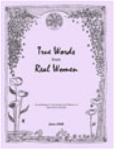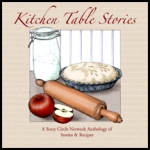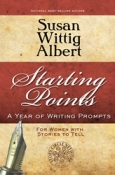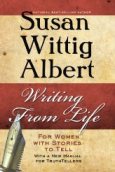By Janet Grace Riehl
Silly me. For the last 40 years I thought “body of work” (and the more difficult to pronounce French word “oeuvre”) referred to the total output of creative work in whatever media: literature, visual art, drama, music, or dance. When I searched for the term today, I found that definition is now overwhelmed with
My First Doodle, October 11, 2011
literal references to bodywork. Of these, I like “cultivating a body of wisdom through movement.” Although this tagline advertises a San Francisco Pilates studio, if we look at it more generally, we can see how apt it is.
Cultivating. As artists we cultivate ourselves, our memories, and our craft.
Body. All creative work comes through our bodies. As our work accumulates over a lifetime it attains a life and shape of its own, just as our bodies do.
Wisdom. Well, isn’t that the point?
Movement. Life is movement. As we move, so does our work as it changes and grow. Simultaneously we learn and master our art.
I love the idea—and the feeling—of incremental progress that culminates in something larger over time. Most recently I’ve experienced this as I create a Body of Work through the digital artwork I’m creating on my smart phone using an app called “Doodler.” My Young Friend showed me how to use the phone camera in early June 2011. By October 11, 2011 she’d inspired me to find a drawing app for my phone. I’d never used such a thing before, so my learning curve started from zero.
Although formerly a working artist, I hadn’t made any visual art to speak of in several years. I’d yearned to find a way to bring art back into my life—to no avail. My smart phone served as a Magic Genie granting this wish as I pursued photography, post-production work on photos, and digital drawing. It worked because it was No Big Deal. My tools? A phone in my pocket. Always there. Always waiting for my slightest command.
From October 2011 until now—June 2012—I’ve made at least 700 doodles, learned a lot, and been reunited with an essential part of myself. Several styles emerged in this Body of Work: 1) landscape; 2) figurative; 3) abstract; 4) graphic (mini-posters); and 5) cartoons. I didn’t set out to work in these categories. As they came out eventually I could see what I was doing. This is one of the most rewarding features of making a Body of Work: we see our deepest thoughts and feelings take shape; we see our craft grow and become more refined. We see the cultivation of our souls in the seeds planted in the soil of our creative work.
Doodling on my phone worked because there were built in limits: 1) the size of my finished product couldn’t be any larger than the screen of my phone, and 2) the small number of tools available on this simple program. Constraints contain our creative process. Rather than obstructing, constraints can provide comfort and focus. I became ever more intrigued as I discovered an almost endless number of effects, and recorded my biggest breakthroughs in a memo app on my phone. Who knows? Maybe someday I’ll write a manual for Doodling.
Doodling on my phone worked because I could do it anywhere whether waiting in a doctor’s office or lounging in bed upon waking or before sleep. It was easy, and it was fun.
Doodling on my phone worked because I had an instant place to display my work: Facebook. As soon as I completed my doodle, I uploaded it to my page. And, just as instantly I received feedback. At that point purpose, process, product, venue, and audience came together to form a virtuous circle that encouraged me to continue. With that additional momentum, the Body of Work continued to grow and mature—even to attract patrons.
A friend on Facebook (we’ve never met) began to commission doodles. “Janet, please do a doodle on…” 1) Martin Luther King Jr.’s birthday; 2) Brown vs. Board of Education’s ruling about segregation; and 3) a quotation related to race relations. These doodles are miniature posters, and attracted more followers.
Many viewers suggested that this work has commercial possibilities. In the future, maybe so. But, right now keeping it in the Zone of Play serves me and my work well. I have traded one of my doodles to my hairdresser for $100 worth of her services. She plans to use this image as a logo on her card.
Oh, yes! And as I show friends how my Doodler program works I ask them to make one. Gradually “My First Doodle” collection keeps getting bigger and bigger. It’s a Body of Work within a Body of Work.
And so the Doodle Body of Work continues to grow and to take me places I never could have imagined or even aspired to. Without the twin burdens of hope and fear there is a Space of Freedom in which the work can continue to come forth and develop.
Now, if I could only apply these lessons to my writing and my wish to return to my violin. We’ll see.
Pose questions about practical creativity; give ideas for future cycle themes; and join in the dialog. Learn more about our audio book “Sightlines: A Family Love Story in Poetry and Music” at http://bit.ly/aZVd1e.







Janet: Your enthusiasm is an inspiration,
Janet, every time you post one of your doodles to Facebook you bring a smile to my face- they are so vibrant and vivid! I am amazed by what you can do with such a simple application. You are truly an artist.
Janet, Your creativity runeth over, and we are the inspired, joyous and awed recipients of your gifts. As Khadijah said, you bring a smile to my face with your work.
Arletta
Your butterfly doodle found a place in my new novel, and your thoughts carved a special place in my heart.
Thank you, Janet
Janet, as I read your post it occurred to me that what spurred your creativity was twofold: limitations of the medium and a sense of play. Of the two, the sense of play, experimentation, and a “let’s see what happens if I do this …” attitude frees our personal expression.
When I approach my writing with this same sense of play, not only is writing more fun, it tends to be more expressive as well.
Thanks for the reminder! 🙂
Thanks to all of you who have been following and enjoying my Doodles that I’ve been sharing in my Facebook Gallery.
Amber, yes. A combination of Structure combined with Play–and without expectation is the most healthy and productive way for creative work to emerge. Creating Bodies of Work has furthered that for me.
Janet
I’ve already told you how much I enjoy your doodles. In fact, the word “doodle” does not even begin to describe the truly fine art you are creating. Your essay goes perfectly with the body of work. Keep ’em coming!
Thank you, Fran. Your opinion matters a lot to me. The upside of “Doodle” is that it keeps it light. The downside is that it makes it sound a bit frivolous.
I do consider that I’m building a body of digital art, and it’s exciting to explore the new media. The low resolution will confine what can be done with them, but I’m sure there’s still a wide field to play in.
Pingback: Creative Catalyst: Doodling a Body of Work | Riehl Life: Village Wisdom for the 21st Century
Janet,
I love the sense of play and child-like enthusiasm that you bring to your new body of ‘doodle’ work. I think that’s the key to your success here, and reconnecting with your creativity in other areas, perhaps, needs that same feeling of play?
I know, that a good throwing day for me comes when I have no expectations and let the clay have its own way.
Nice article!
Thanks, Susan. Work that comes through both work and joy is the best work. I admire both your art and words.
Upon more reflection: It’s how organic the process is on the inside and how it fits seamlessly with my outer circumstances. So there’s no struggle or resistance.
You are simply amazing.
Pingback: Interview: Janet Riehl, Artist, Writer, and Storyteller « The Heron's Path
Thank you. I feel more encouraged to continue doodling.
Pingback: THE ZEN OF ART OPENINGS | Telling HerStories: The Broad View